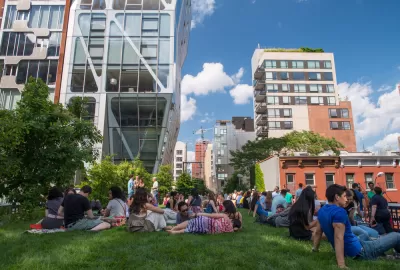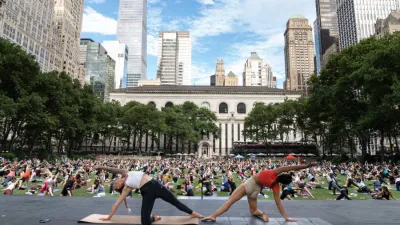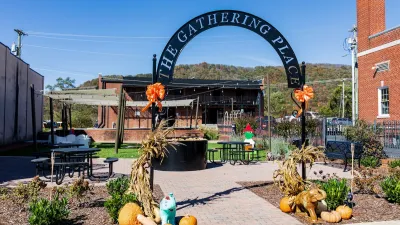A closer marriage between planning and landscape architecture would mean strong connections between the processes of policy making and place making.

"Landscape architects need to become urban planners and work 'upstream' in the policy and regulatory process to ensure public space leads urban placemaking efforts."
Ian Dillon writes the above statement to report a message presented by a group of landscape architects at the ASLA 2019 Conference, recently held in Washington, D.C.
According to one of the panelists, Michael Grove, the current disconnect between the two fields has resulted from a historic decoupling of place making and policy making—now landscape architects excel at the former and planners at the latter. "Landscape architects can lead and participate in urban policy-making through 'upstream urbanism,' while prioritizing public spaces as the dominant placemaking strategy in cities," writes Dillon to explain Grove's point.
FULL STORY: Landscape Architects Must Become Planners

Trump Administration Could Effectively End Housing Voucher Program
Federal officials are eyeing major cuts to the Section 8 program that helps millions of low-income households pay rent.

Planetizen Federal Action Tracker
A weekly monitor of how Trump’s orders and actions are impacting planners and planning in America.

Ken Jennings Launches Transit Web Series
The Jeopardy champ wants you to ride public transit.

California Invests Additional $5M in Electric School Buses
The state wants to electrify all of its school bus fleets by 2035.

Austin Launches $2M Homelessness Prevention Fund
A new grant program from the city’s Homeless Strategy Office will fund rental assistance and supportive services.

Alabama School Forestry Initiative Brings Trees to Schoolyards
Trees can improve physical and mental health for students and commnity members.
Urban Design for Planners 1: Software Tools
This six-course series explores essential urban design concepts using open source software and equips planners with the tools they need to participate fully in the urban design process.
Planning for Universal Design
Learn the tools for implementing Universal Design in planning regulations.
Ada County Highway District
Clanton & Associates, Inc.
Jessamine County Fiscal Court
Institute for Housing and Urban Development Studies (IHS)
City of Grandview
Harvard GSD Executive Education
Toledo-Lucas County Plan Commissions
Salt Lake City
NYU Wagner Graduate School of Public Service





























